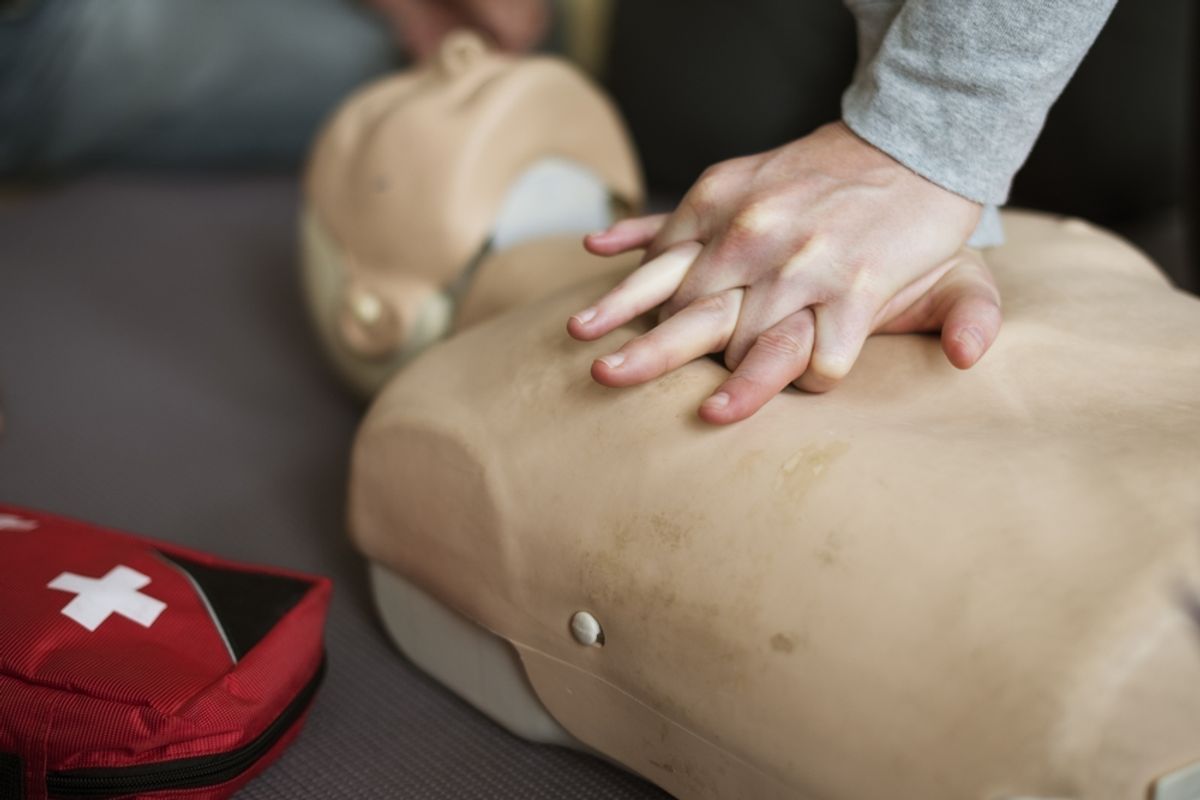Future space tourism and long-term space missions don’t just focus on growing their spacecraft infrastructure. They also need reliable medical protocols and equipment onboard in case of emergencies. One of the cornerstones of lifesaving care is CPR (cardiopulmonary resuscitation). But how do you perform chest compressions without the help of gravity?
To find out, a research team of clinicians and engineers from CHU de Nancy, the University of Lorraine, the University of Paris, the French space agency, and more tested different automatic chest compression devices aboard a modified Airbus A310 aircraft, Europe’s only “flying laboratory” for simulating space conditions.
Their findings could shape the future of medical guidelines for space travel, making human journeys beyond Earth safer.
CPR In Space
On Earth, CPR requires about 100 to 120 compressions per minute with the rescuer pushing the chest roughly two inches deep each time. Even here, there are situations where manual chest compressions are difficult, like in helicopters or during prolonged resuscitation efforts lasting more than 40 minutes. In those cases, automatic chest compression devices are already an essential backup.
But in space, the problem is magnified. Without gravity, a rescuer’s body weight can’t drive compressions into the chest. Researchers have proposed several improvisations, with names as colorful as the maneuvers themselves: the reverse bear hug, the Evetts Russomano method, or the Handstand method. The latter involves the rescuer bracing their legs against the spacecraft wall while literally “hand standing” on the patient’s chest to deliver compressions.
However, according to a recent press release, none of these methods consistently achieve the compression depth required for effective CPR in space.
Read More: The New Training Programs That Will Prep Students to Keep Astronauts Healthy In Space
Testing CPR in Microgravity
To measure performance more precisely, researchers turned to parabolic flights (achieving weightlessness through roller coaster-like flight maneuvers). During each parabola, the plane provides around 22 seconds of true microgravity. With about 30 parabolas per flight, spread across three separate test days, the team created repeated opportunities to practice resuscitation on a floating high-fidelity CPR training mannequin.
They tested three types of automatic chest compression devices: a standard mechanical piston device, a compression band device, and a small-sized piston device. The results showed a clear winner, with the standard mechanical piston device reaching the depth needed for effective CPR, with a median compression depth of 53.0 mm (around 2 in). That was significantly greater than both the compression band and small piston devices (29 mm each) and far better than the manual Handstand method (34.5 mm).
The findings indicate that while current manual CPR techniques in microgravity fall short, certain automatic devices can deliver the required force reliably.
Space Medicine Provides Lessons for Earth
Addressing cardiac arrest during spaceflight will always be difficult. Both rescuer and patient are weightless, making every movement more complicated. Whether future missions will carry automatic chest compression devices remains an open question.
“It will be up to every space agency whether they want to include automatic chest compression devices in their emergency medical kit. We know they have other considerations beyond effectiveness, such as weight and space constraints,” said Nathan Reynette from the Cardiology Department at Université de Lorraine in the press statement.
He added: “While cardiac arrest is a high danger event, that could even terminate a space mission, it is a relatively low risk for now. Most astronauts are young, healthy and physically fit individuals who have intensive medical monitoring, including scanning for chronic heart disease, before going into space. Nevertheless, longer lasting space missions in future and space tourism could increase the risks of a medical emergency occurring.”
Reynette also pointed to earthly benefits, since their research highlights “the usefulness of automated chest compression devices to perform CPR in challenging environments. Space medicine often provides transferable lessons for emergency procedures in isolated environments on Earth [submarines and arctic bases], where space and clinical experience are also limited.”
This article is not offering medical advice and should be used for informational purposes only.
Read More: Astronauts Get Sick, Too. Here’s the Tech That Could Grow Medicine on Mars.
Article Sources
Our writers at Discovermagazine.com use peer-reviewed studies and high-quality sources for our articles, and our editors review for scientific accuracy and editorial standards. Review the sources used below for this article:
